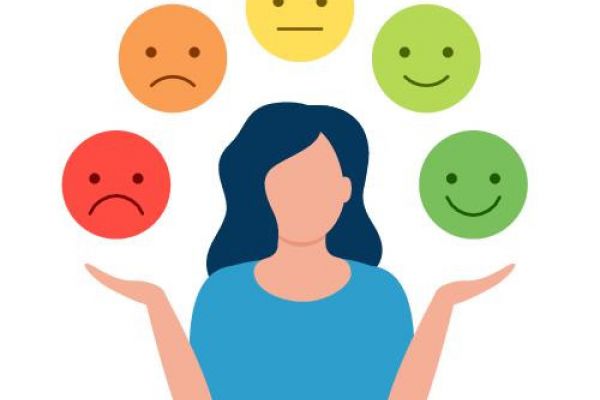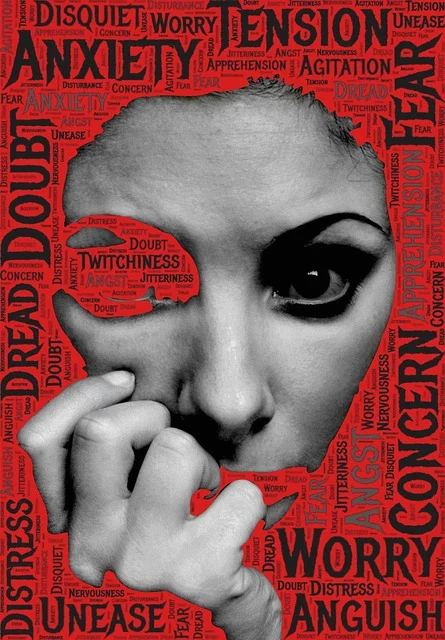Introduction: Why Emotion Regulation Matters for Mental Health
Emotions are a natural part of being human. They guide decisions, shape relationships, and influence how we respond to life’s challenges. While emotions themselves are neither good nor bad, the way we manage them has a profound impact on mental well-being. The ability to navigate strong feelings, remain balanced under stress, and respond thoughtfully rather than impulsively is known as emotion regulation.

In today’s fast-paced world, where stress, uncertainty, and constant change are common, emotion regulation has become an essential life skill. It not only helps individuals manage mental health conditions such as anxiety or depression but also improves resilience, relationships, and overall life satisfaction.
This article provides a comprehensive exploration of emotion regulation—what it means, how it works, and how people can practice it in daily life. It will also break down structured approaches, such as the 4 R’s of emotional regulation, the 5 steps of emotional regulation, and real-life examples to illustrate how these strategies work in practice.
What Is Emotion Regulation?
Emotion regulation refers to the process of recognizing, understanding, and managing emotions in a way that promotes healthy functioning. It involves noticing what we feel, evaluating how to respond, and using strategies to maintain balance and control.
At its core, emotion regulation is not about suppressing emotions or pretending they do not exist. Instead, it’s about:
- Acknowledging feelings without judgment.
- Choosing appropriate responses to emotional triggers.
- Preventing emotions from overwhelming behavior.
For example, imagine someone feels anger during a disagreement at work. Emotion regulation does not mean ignoring the anger; instead, it involves taking a moment to breathe, calming down, and expressing concerns constructively rather than shouting or walking out.
The Role of Emotion Regulation in Mental Well-Being
Effective emotion regulation plays a central role in overall psychological health. It helps people adapt to stressful situations, build resilience, and form healthier relationships. Some key benefits include:
- Stress management: Regulated emotions reduce the risk of burnout and improve problem-solving abilities.
- Healthier relationships: Emotionally balanced individuals communicate more effectively and avoid unnecessary conflicts.
- Better decision-making: When emotions are managed, choices are less likely to be impulsive and more likely to align with long-term goals.
- Improved resilience: People with strong regulation skills bounce back from setbacks more quickly.
- Mental health support: Emotional regulation is an important skill in managing depression, anxiety, and trauma-related conditions.
What Are the 4 R’s of Emotional Regulation?
One structured way of understanding emotion regulation is through the 4 R’s framework: Recognize, Reframe, Relax, and Release.
1. Recognize
The first step is to identify the emotion being experienced. This requires mindfulness—paying attention to feelings as they arise rather than ignoring or dismissing them. For example, recognizing whether one feels sadness, anger, or anxiety provides clarity for the next steps.
2. Reframe
Reframing involves changing the way one thinks about a situation. Instead of viewing a challenge as a disaster, it can be reframed as a learning opportunity. This shift in perspective often reduces the intensity of negative emotions.
3. Relax
Relaxation techniques such as deep breathing, mindfulness meditation, or progressive muscle relaxation help calm the body’s stress response. When the body relaxes, emotions feel less overwhelming.
4. Release
Releasing emotions means finding healthy outlets to express or let go of feelings. This may include journaling, physical activity, or creative expression. Holding on to emotions often increases stress, while release promotes balance.
What Are the 5 Steps of Emotional Regulation?
Another useful model involves the 5 steps of emotional regulation, which outline how individuals can consciously manage emotions in a structured way:

1. Identify Emotions
Become aware of the specific emotion being experienced. Naming the feeling (“I feel frustrated” or “I feel anxious”) helps create distance and clarity.
2. Accept and Understand
Rather than pushing emotions away, this step emphasizes accepting them as valid experiences. For instance, acknowledging sadness without labeling it as weakness.
3. Use Regulation Strategies
This includes applying tools such as positive self-talk, mindfulness, relaxation techniques, or problem-solving.
4. Practice Coping Skills
Coping skills may include engaging in physical activity, talking with a trusted friend, or practicing breathing exercises. These tools prevent emotions from spiraling out of control.
5. Reflect and Adjust
Finally, reflecting on how emotions were handled allows growth and improvement. For example, asking, “Did my strategy help?” or “What can I do differently next time?”
What Is an Example of Emotional Regulation?
Consider a common situation: being stuck in heavy traffic on the way to an important meeting.
- Unregulated response: Becoming frustrated, honking aggressively, or ruminating over being late.
- Regulated response: Recognizing the frustration, taking deep breaths, reframing the situation as outside of one’s control, and using the extra time to listen to an educational podcast.
This example illustrates how emotion regulation changes both behavior and overall well-being in stressful situations.
Common Challenges in Regulating Emotions
While emotion regulation is a powerful skill, many people struggle with it due to:
- Emotional suppression: Ignoring emotions often causes them to intensify later.
- Overreacting: Strong emotions may lead to impulsive or harmful actions.
- Mislabeling emotions: Difficulty in identifying emotions can make regulation harder.
- Chronic stress: Long-term stress reduces the ability to regulate effectively.
Evidence-Based Strategies for Emotion Regulation
Psychologists and therapists use several proven strategies to improve emotional regulation skills:
- Mindfulness practices: Observing thoughts and feelings without judgment helps reduce reactivity.
- Cognitive restructuring: Challenging negative thought patterns allows for healthier perspectives.
- Breathing and relaxation techniques: Deep breathing or meditation calms physiological arousal.
- Journaling and reflection: Writing about emotions provides clarity and insight.
- Behavioral activation: Engaging in meaningful activities lifts mood and improves resilience.
Benefits of Developing Emotional Regulation Skills
People who actively work on emotion regulation notice improvements in many areas of life, including:
- Reduced anxiety and depression
- Healthier stress responses
- Increased patience and tolerance
- Better focus and productivity
- Enhanced communication in relationships
Practical Tips for Building Emotional Regulation in Daily Life
Here are some everyday practices to strengthen emotional regulation skills:
- Pause before reacting: Take a few deep breaths before responding to triggers.
- Keep a mood journal: Track emotions daily to recognize patterns.
- Practice gratitude: Focusing on positive experiences balances negative emotions.
- Develop routines: Consistent sleep, exercise, and nutrition support emotional stability.
- Seek support when needed: Talking with a therapist or counselor can build stronger skills.
Conclusion: Building a Healthier Relationship With Emotions
Emotions are powerful guides in life, but without regulation, they can overwhelm and disrupt well-being. Learning to recognize, reframe, relax, and release emotions, alongside practicing the five structured steps of regulation, empowers individuals to lead more balanced and fulfilling lives.
Emotion regulation is not about eliminating feelings—it’s about creating a healthier relationship with them. By practicing these skills daily, people can strengthen resilience, enhance relationships, and improve overall mental health.



